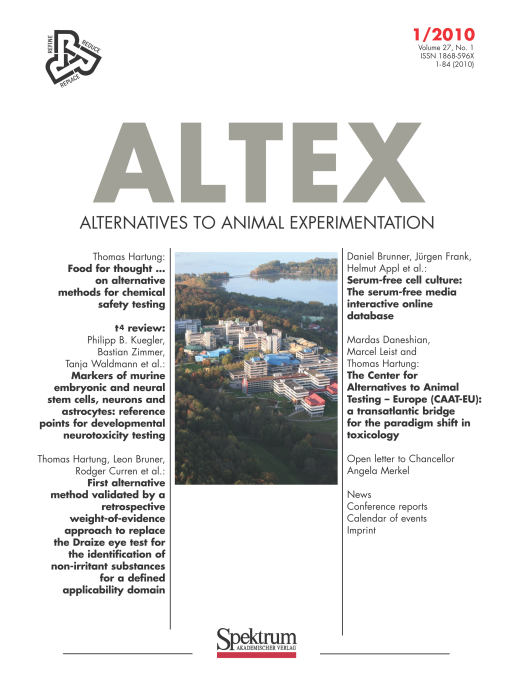First alternative method validated by a retrospective weight-of-evidence approach to replace the Draize eye test for the identification of non-irritant substances for a defined applicability domain
Main Article Content
Abstract
A replacement alternative to the rabbit eye irritation test has been sought for many years. First published in 1944 by FDA toxicologist J. H. Draize, the test, now known as the Draize Eye Test, has been used extensively to assess eye safety. It has also been a focal point for concern regarding its animal use. In 1992, Molecular Devices developed the Cytosensor Microphysiometer (CM) technology, an automated potentiometric online measurement of pH changes in cells, and evaluated it also for chemically induced irritation.
The method was included in some of the six major validation studies for eye irritation from 1991-1997. The results for CM were inconclusive as were those from other tests evaluated as stand-alone methods to fully replace the animal test. In 2002, the European Centre for the Validation of Alternative Methods (ECVAM) started applying concepts from evidence-based medicine, and opened validation to retrospective meta-analysis. This activity was done in collaboration with US counterpart ICCVAM/NICEATM, and the European Cosmetics Association, Colipa.
After a new, comprehensive evaluation of the prior available data, the ECVAM scientific advisory committee (ESAC) has recently accepted the CM as capable of identifying non-irritants for testing limited to water-soluble surfactants and water-soluble surfactant-containing mixtures. This 25-year development is remarkable and instructive in many respects. The authors see this as opening the door, at last, for an end to the use of animals as a standard requirement for eye irritation. Here, several of the people critically involved in this processes have summarized the important aspects of this history.
Article Details
Articles are distributed under the terms of the Creative Commons Attribution 4.0 International license (http://creativecommons.org/licenses/by/4.0/), which permits unrestricted use, distribution and reproduction in any medium, provided the original work is appropriately cited (CC-BY). Copyright on any article in ALTEX is retained by the author(s).


